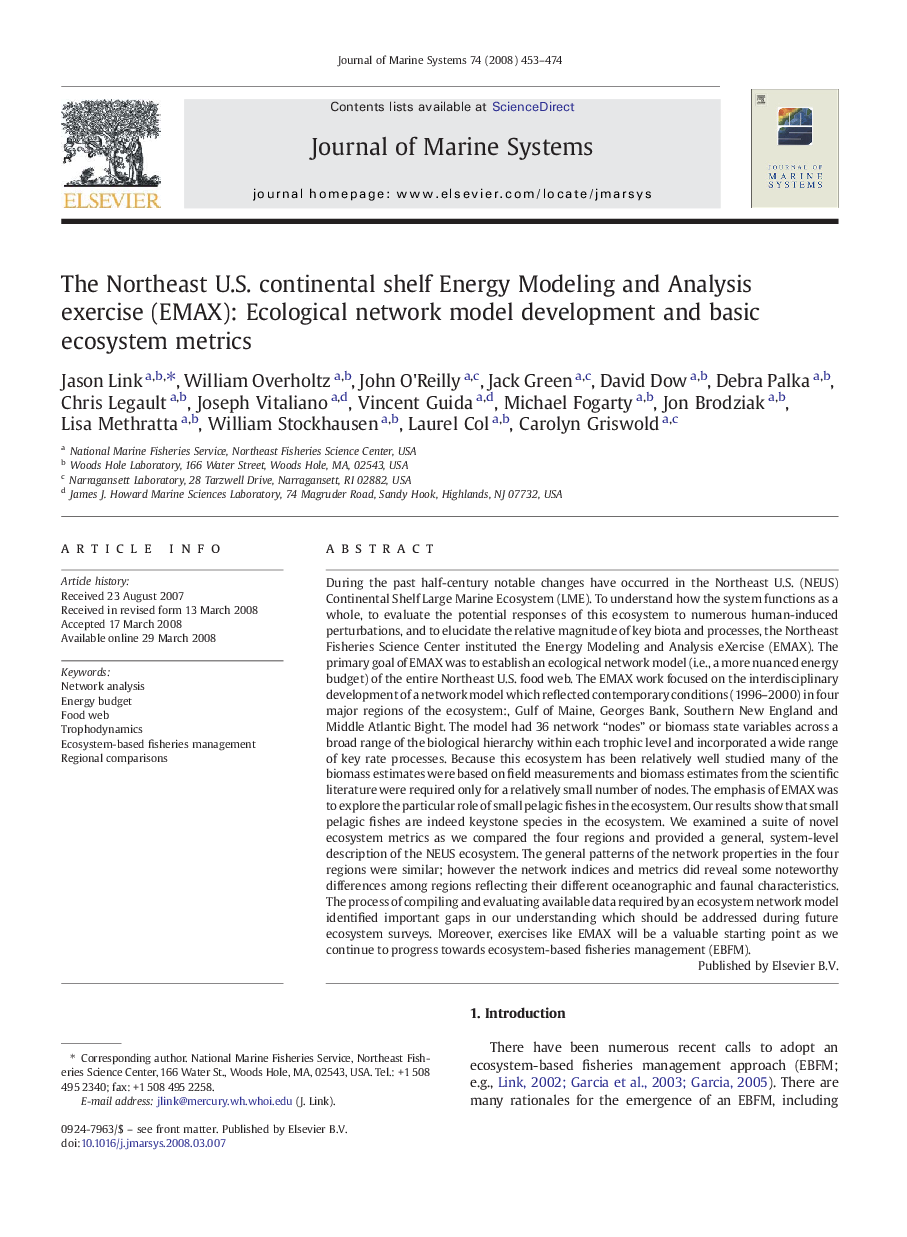| Article ID | Journal | Published Year | Pages | File Type |
|---|---|---|---|---|
| 4549013 | Journal of Marine Systems | 2008 | 22 Pages |
During the past half-century notable changes have occurred in the Northeast U.S. (NEUS) Continental Shelf Large Marine Ecosystem (LME). To understand how the system functions as a whole, to evaluate the potential responses of this ecosystem to numerous human-induced perturbations, and to elucidate the relative magnitude of key biota and processes, the Northeast Fisheries Science Center instituted the Energy Modeling and Analysis eXercise (EMAX). The primary goal of EMAX was to establish an ecological network model (i.e., a more nuanced energy budget) of the entire Northeast U.S. food web. The EMAX work focused on the interdisciplinary development of a network model which reflected contemporary conditions (1996–2000) in four major regions of the ecosystem:, Gulf of Maine, Georges Bank, Southern New England and Middle Atlantic Bight. The model had 36 network “nodes” or biomass state variables across a broad range of the biological hierarchy within each trophic level and incorporated a wide range of key rate processes. Because this ecosystem has been relatively well studied many of the biomass estimates were based on field measurements and biomass estimates from the scientific literature were required only for a relatively small number of nodes. The emphasis of EMAX was to explore the particular role of small pelagic fishes in the ecosystem. Our results show that small pelagic fishes are indeed keystone species in the ecosystem. We examined a suite of novel ecosystem metrics as we compared the four regions and provided a general, system-level description of the NEUS ecosystem. The general patterns of the network properties in the four regions were similar; however the network indices and metrics did reveal some noteworthy differences among regions reflecting their different oceanographic and faunal characteristics. The process of compiling and evaluating available data required by an ecosystem network model identified important gaps in our understanding which should be addressed during future ecosystem surveys. Moreover, exercises like EMAX will be a valuable starting point as we continue to progress towards ecosystem-based fisheries management (EBFM).
